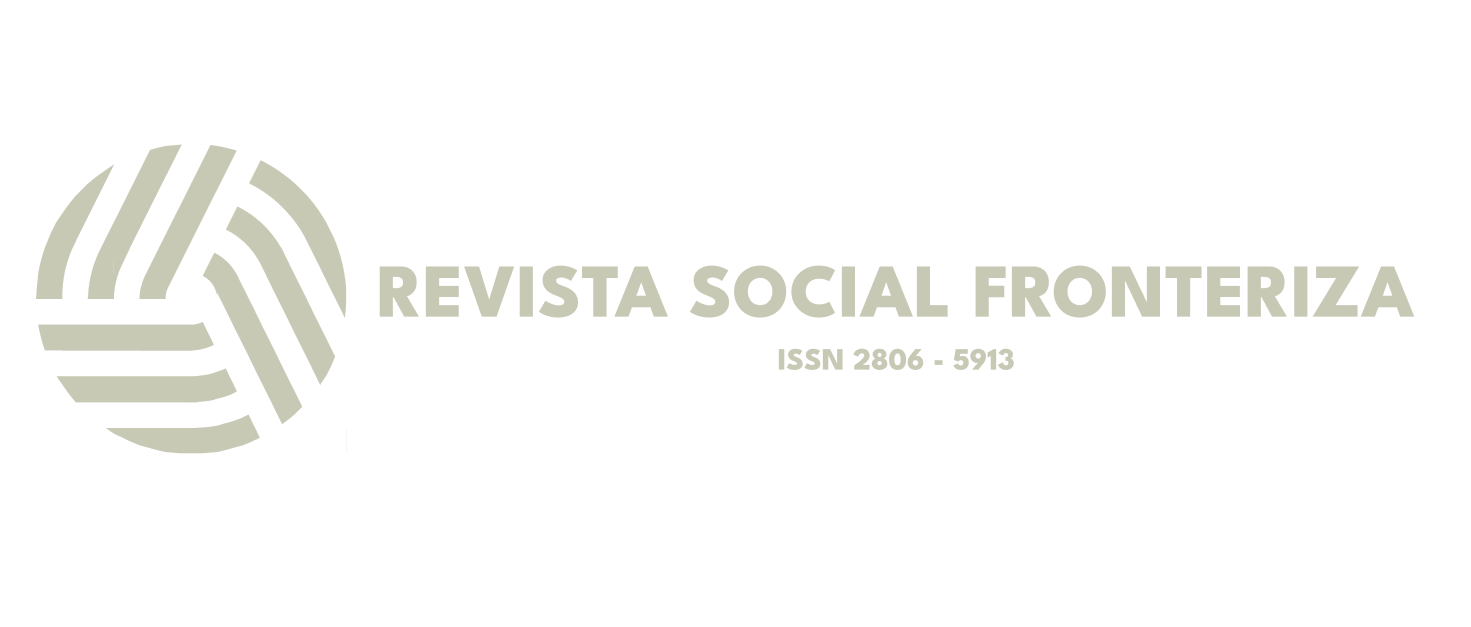Onicofagia como indicador de trastornos de ansiedad en niños y adolescentes: una revisión crítica de la literatura.
DOI:
https://doi.org/10.59814/resofro.2024.4(4)337Palabras clave:
onicofagia; morderse las uñas; ansiedad.Resumen
La onicofagia, que afecta al 20-30% de la población en diversos grupos etarios, se asocia frecuentemente con problemas psicosociales y de salud oral. Este artículo revisa la prevalencia, etiología, historia, complicaciones y manejo de la onicofagia, con un enfoque particular en su relación con la ansiedad. Se realizó la revisión sistemática de la literatura en PubMed utilizando términos MeSH como "nail biting," "onychophagia," y "anxiety," revela que la onicofagia está asociada con altos niveles de ansiedad, aunque las evidencias no siempre muestran una relación directa y consistente. Estudios recientes indican como resultado que el hábito de morderse las uñas está relacionado con un aumento en los síntomas de ansiedad y problemas en las articulaciones temporomandibulares. La presencia de onicofagia puede implicar un mayor riesgo de trastornos psicológicos y físicos, siendo fundamental la intervención multidisciplinaria para su manejo. Conclusivamente, aunque la onicofagia y la ansiedad están correlacionadas, se necesita más investigación para entender completamente esta relación y desarrollar estrategias de tratamiento efectivas.
Descargas
Métricas
Citas
Almutairi, A. F., Albesher, N., Aljohani, M., Alsinanni, M., Turkistani, O., & Salam, M. (2021). Association of oral parafunctional habits with anxiety and the Big-Five Personality Traits in the Saudi adult population. The Saudi Dental Journal, 33(2), 90–98. https://doi.org/10.1016/j.sdentj.2020.01.003
Atsü, S. S., Güner, S., Palulu, N., Bulut, A. C., & Kürkçüoğlu, I. (2019). Oral parafunctions, personality traits, anxiety and their association with signs and symptoms of temporomandibular disorders in adolescents. African Health Sciences, 19(1), 1801–1810. https://doi.org/10.4314/ahs.v19i1.57
Gavish, A., Halachmi, M., Winocur, E., & Gazit, E. (2000). Oral habits and their association with signs and symptoms of temporomandibular disorders in adolescent girls. Journal of Oral Rehabilitation, 27(1), 22-32.
Ghanizadeh, A. (2011). Nail biting; etiology, consequences and management. Iranian Journal of Medical Sciences, 36(2), 73.
Görecka, M., Pihut, M., & Kulesa-Mrowiecka, M. (2017). Analysis of pain and painless symptoms in temporomandibular joints dysfunction in adult patients. Folia Medica Cracoviensia, 57, 71-81.
Grzesiak, M., Beszlej, J. A., Szechinski, M., Szewczuk-Boguslawska, M., Waszczuk, E., Mulak, A., et al. (2010). Depressive disorders in patients with irritable bowel syndrome diagnosed using the Composite International Diagnostic Interview. Advances in Clinical and Experimental Medicine, 19, 601-605.
Gu, L., Pathoulas, J. T., Widge, A. S., Idnani, A., & Lipner, S. R. (2022). Exacerbation of onychophagia and onychotillomania during the COVID-19 pandemic: a survey-based study. International Journal of Dermatology.
Grant, J. E., Mancebo, M. C., Eisen, J. L., & Rasmussen, S. A. (2010). Impulse control disorders in children and adolescents with obsessive-compulsive disorder. Psychiatry Research, 30, 109-113.
Halteh, P., Scher, R. K., & Lipner, S. R. (2017). Onychophagia: A nail-biting conundrum for physicians. Journal of Dermatological Treatment, 28, 166–172.
Kolcakoglu, K., & Yucel, G. (2021). Anxiety and harmful oral habits in preschool children during the 2020 first-wave COVID-19 lockdown in Turkey. Dental and Medical Problems, 58(4), 433–439. https://doi.org/10.17219/dmp/142284
Leme, M., Barbosa, T., Castelo, P., & Gavião, M. B. (2014). Associations between psychological factors and the presence of deleterious oral habits in children and adolescents. The Journal of Clinical Pediatric Dentistry, 38(4), 313–317. https://doi.org/10.17796/jcpd.38.4.c48238322205466w
Magid, M., Mennella, C., Kuhn, H., et al. (2017). Onychophagia and onychotillomania can be effectively managed. Journal of the American Academy of Dermatology, 77(2), e143–e144.
Pacan, P., Grzesiak, M., Reich, A., Kantorska-Janiec, M., & Szepietowski, J. C. (2014). Onychophagia and onychotillomania: prevalence, clinical picture and comorbidities. Acta Dermato-Venereologica, 94(1), 67–71. https://doi.org/10.2340/00015555-1616
Sachan, A., & Chaturvedi, T. P. (2012). Onychophagia (Nail biting), anxiety, and malocclusion. Indian Journal of Dental Research, 23(5), 680-682.
Siddiqui, E. U., Naeem, S. S., Naqvi, H., & Ahmed, B. (2012). Prevalence of body-focused repetitive behaviors in three large medical colleges of Karachi: a cross-sectional study. BMC Research Notes, 5, 1-6.
Singal, A., & Daulatabad, D. (2017). Nail tic disorders: Manifestations, pathogenesis and management. Indian Journal of Dermatology, Venereology and Leprology, 83(1), 19–26. https://doi.org/10.4103/0378-6323.184202
Silvia, S., Cristian, C., Markus, J., Mauricio, A., Cathal, M., Angelo, E., et al. (2018). Socioeconomic status, non-communicable disease risk factors, and walking speed in older adults: Multi-cohort population-based study. BMJ, 360, 1-10.
Smith, R. J., & Rubin, A. I. (2020). Pediatric nail disorders: A review. Current Opinion in Pediatrics, 32(4), 506–515. https://doi.org/10.1097/MOP.0000000000000921
Tanaka, O. M., Vitral, R. W. F., Tanaka, G. Y., Guerrero, A. P., & Camargo, E. S. (2008). Nailbiting or onychophagia: A special habit. American Journal of Orthodontics and Dentofacial Orthopedics, 134(2), 305-308. https://doi.org/10.1016/j.ajodo.2007.08.015
Wulkan, A. J., & Tosti, A. (2013). Pediatric nail conditions. Clinical Dermatology, 31(4), 564–572.
Winebrake, J. P., Grover, K., Halteh, P., & Lipner, S. R. (2018). Pediatric onychophagia: A survey-based study of prevalence, etiologies, and co-morbidities. American Journal of Clinical Dermatology, 19(6), 887–891.
Winocur, E., Gavish, A., Finkelshtein, T., Halachmi, M., & Gazit, E. (2001). Oral habits among adolescent girls and their association with symptoms of temporomandibular disorders. Journal of Oral Rehabilitation, 28(6), 624-629.
Publicado
Cómo citar
Número
Sección
Licencia
Derechos de autor 2024 Ximena Azucena Sosa Véliz , Jorge Carlos Molina Intriago , Gabriela Stefanía Sosa Véliz

Esta obra está bajo una licencia internacional Creative Commons Atribución-NoComercial-SinDerivadas 4.0.




































